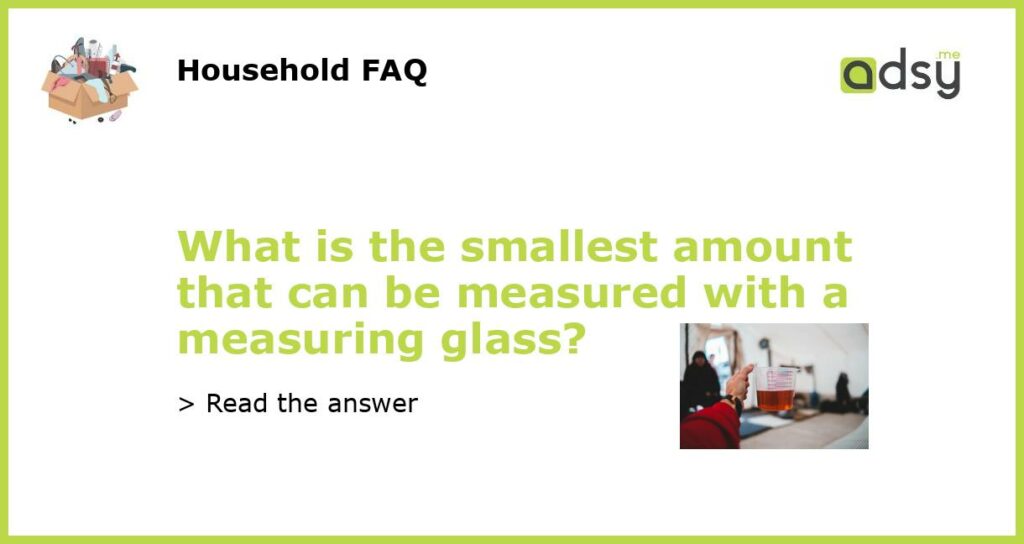Measuring glasses are commonly used in the kitchen for measuring liquids such as water, milk, or oil. But have you ever wondered what is the smallest amount that can be measured with a measuring glass? In this article, we will explore this question and provide insights into measuring glass accuracy and precision.
How Measuring Glasses Work
Measuring glasses typically have markings on the side indicating the volume of the liquid being measured. These markings are usually in milliliters (ml) or fluid ounces (fl. oz). Measuring glasses work by filling them with the liquid to be measured up to the desired level, and then reading the value of the volume from the markings on the side of the glass.
The Smallest Amount Measurable
The smallest amount that can be accurately measured with a measuring glass depends on its size, the markings on the side and the precision of the measurement. Typically, measuring glasses can measure volumes as small as 5 ml or 0.17 fl. oz. However, the accuracy of the measurement decreases as the volume being measured becomes smaller.
Accuracy vs. Precision
Accuracy refers to how close the measured value is to the true value, while precision relates to how consistent the measured values are when repeated trials are performed. Measuring glasses can have different levels of accuracy and precision depending on factors such as manufacturing quality, the size of the glass, and the markings on the side.
In conclusion, measuring glasses can measure volumes as small as 5 ml or 0.17 fl. oz. However, the accuracy and precision of the measurement depend on various factors. To achieve the most accurate and precise measurements, it is essential to use high-quality measuring glasses with clear and well-defined markings. Knowing the smallest amount that can be measured by a measuring glass is important for accurate and consistent cooking and baking.






